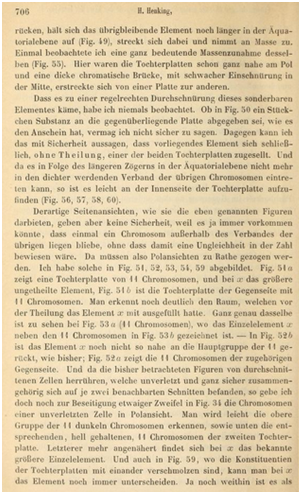 There are symbols in the International Phonetic Alphabet (IPA) that do not represent the sounds of letters they look like. Among these is the grapheme /x/, which does not represent any of the sounds of the letter ex, but instead represents the sound of a voiceless velar fricative, as in an obsolete English word for sherry, Xeres (hheres), properly Xeres sack (sherris sack), from the original spelling of the Andalusian town of Jerez (hhereth).
There are symbols in the International Phonetic Alphabet (IPA) that do not represent the sounds of letters they look like. Among these is the grapheme /x/, which does not represent any of the sounds of the letter ex, but instead represents the sound of a voiceless velar fricative, as in an obsolete English word for sherry, Xeres (hheres), properly Xeres sack (sherris sack), from the original spelling of the Andalusian town of Jerez (hhereth).
In English, the letter x is usually pronounced ks, as in toxicology and salpinx, although if it’s followed by a so called i-glide, an i followed by a vowel or a u as in tune, it may become ksh, as in noxious and flexure. Sometimes at the end of a word it isn’t pronounced at all, as in tic douloureux and rouleaux. In the middle of a word it may be pronounced gz, as in maxillary and anxiety, and sometimes gzh, as in luxurious. And at the start of a word it is usually pronounced z, as in xanthopsia and xeroderma. Unusually, at the start of a word it is sometimes pronounced like the name of the letter ex, as in x-ray, Xmas, and the surname of the telepathic X-man Professor Charles Xavier (or Professor X), pronounced ex-ay-vee-er.
It was Descartes who, in his Géométrie of 1637, introduced the letters z, y, and x as symbols for unknown variables, contrasting them with the symbols for known variables, a, b, and c. The Cartesian coordinate system uses one, two, or three axes, labelled x, y, and z. The invention linked Euclidean geometry to algebra, and although it was named after Descartes, a similar graphing system had been used by Nicole Oresme, a 14th century French cleric. A good example of the law of Non-Original Malappropriate Eponymous Nomenclature (NOMEN), which states that no entity is named after its discoverer.
This use of x to denote an algebraic unknown led to its more general use in this way. X-rays (X-Strahlen) were so called by Röntgen when he described them in 1896, because he did not know what they were. Syndrome X was originally the name used in the 1970s to describe the enigmatic syndrome of angina pectoris in the presence of angiographically normal coronary arteries. Later it came to be known as the cardiac syndrome X, after Gerald Reaven, in his 1988 Banting lecture, described a syndrome of insulin resistance, hyperinsulinaemia, abnormal glucose tolerance, increased triglycerides, reduced HDL-cholesterol, and hypertension, and called it Syndrome X, now known as the metabolic syndrome.

The X chromosome was discovered by the Göttingen cytologist Hermann Henking (1858–1942), when he noticed that a chromosome in the testicular cells of the firebug Pyrrhocoris, which he described in the Zeitschrift für wissenschaftliche Zoologie in 1891 (picture), did not take part in meiosis. He called it “Element x,” since it seemed to be extra to requirements and he did not know what its function was, even doubting that it might be a chromosome. That the X chromosome is shaped like an X is purely coincidental—they all are.
Do you perhaps have the X chromosome deficiency syndrome? This has been described by Melvin Konner, in a book called Women After All, as a common problem that causes a shortened life span, premature hair loss, hyperactivity, hypersexuality, and excessive aggression; it has been attributed to androgen poisoning and is the condition of being male. Of course, maleness is not due to X chromosome deficiency at all; that’s Turner’s syndrome. Perhaps maleness should be called the Y excess syndrome, while recognising that it is a forme fruste of such syndromes as XYY, XYYY, and even XYYYY.
Homoeopaths use X as a symbol denoting the number of times the active constituents in their preparations are diluted out of sight, not because they are in any way uncertain about the benefits that their preparations will bring, nor because X is the sign of multiplication, but because they use tenfold dilutions—X being the Roman symbol for ten, as used in coagulation Factor X. It is just over 150 years since Guldberg and Waage demonstrated what we now call the Law of Mass Action, which reminds us that you need at least some molecules to produce chemical reactions. Toxicologists need a lot of molecules, pharmacologists need the right amount of molecules, and immunologists need at least a few molecules; but homeopaths, so it seems, need no molecules at all.
Jeffrey Aronson is a clinical pharmacologist, working in the Centre for Evidence Based Medicine in Oxford’s Nuffield Department of Primary Care Health Sciences. He is also president emeritus of the British Pharmacological Society.
Competing interests: None declared.
